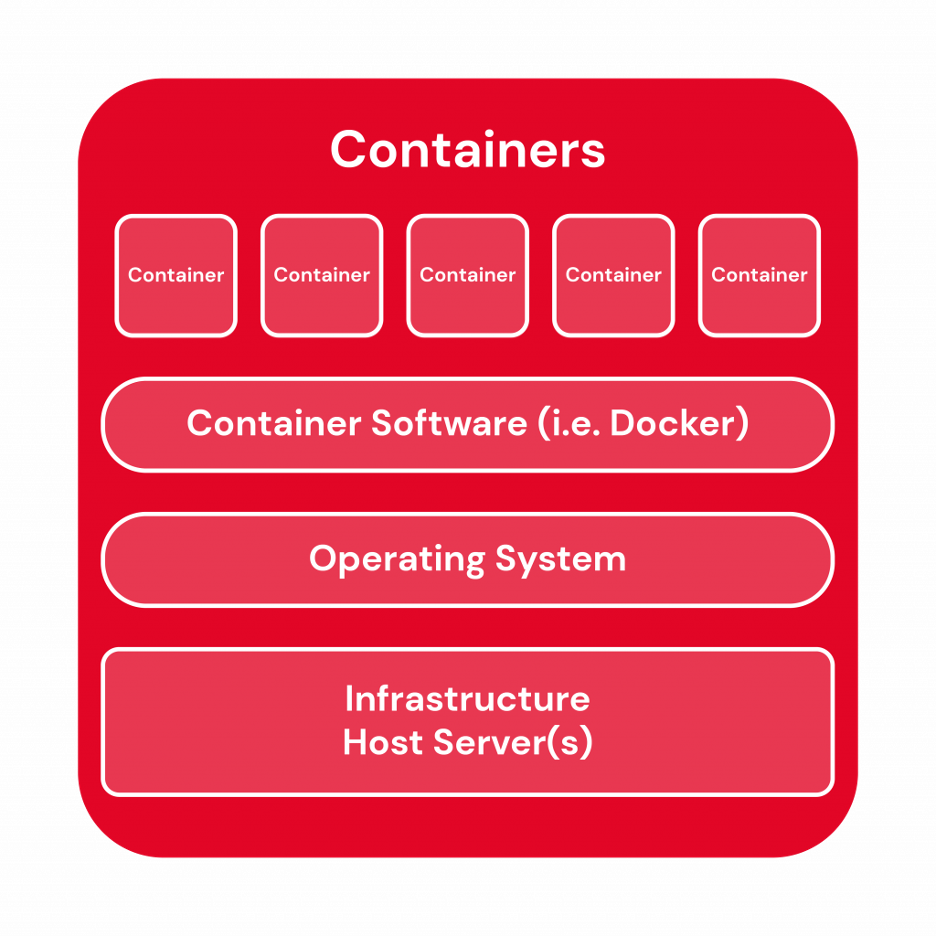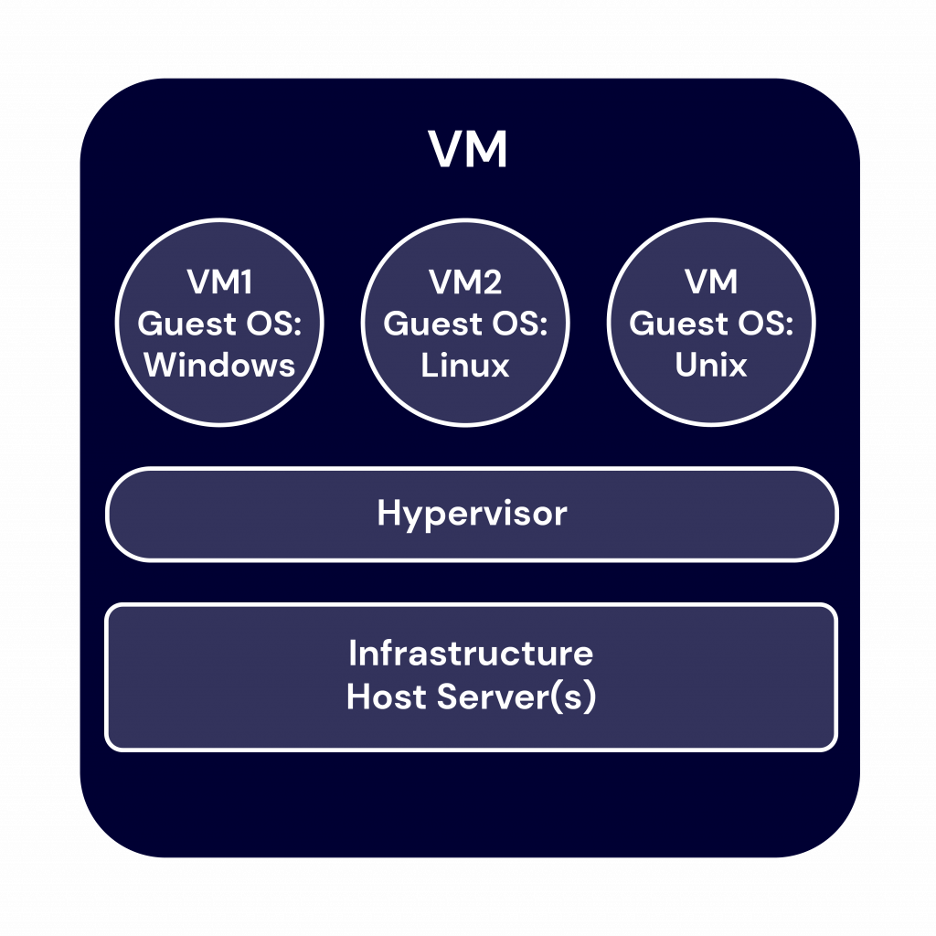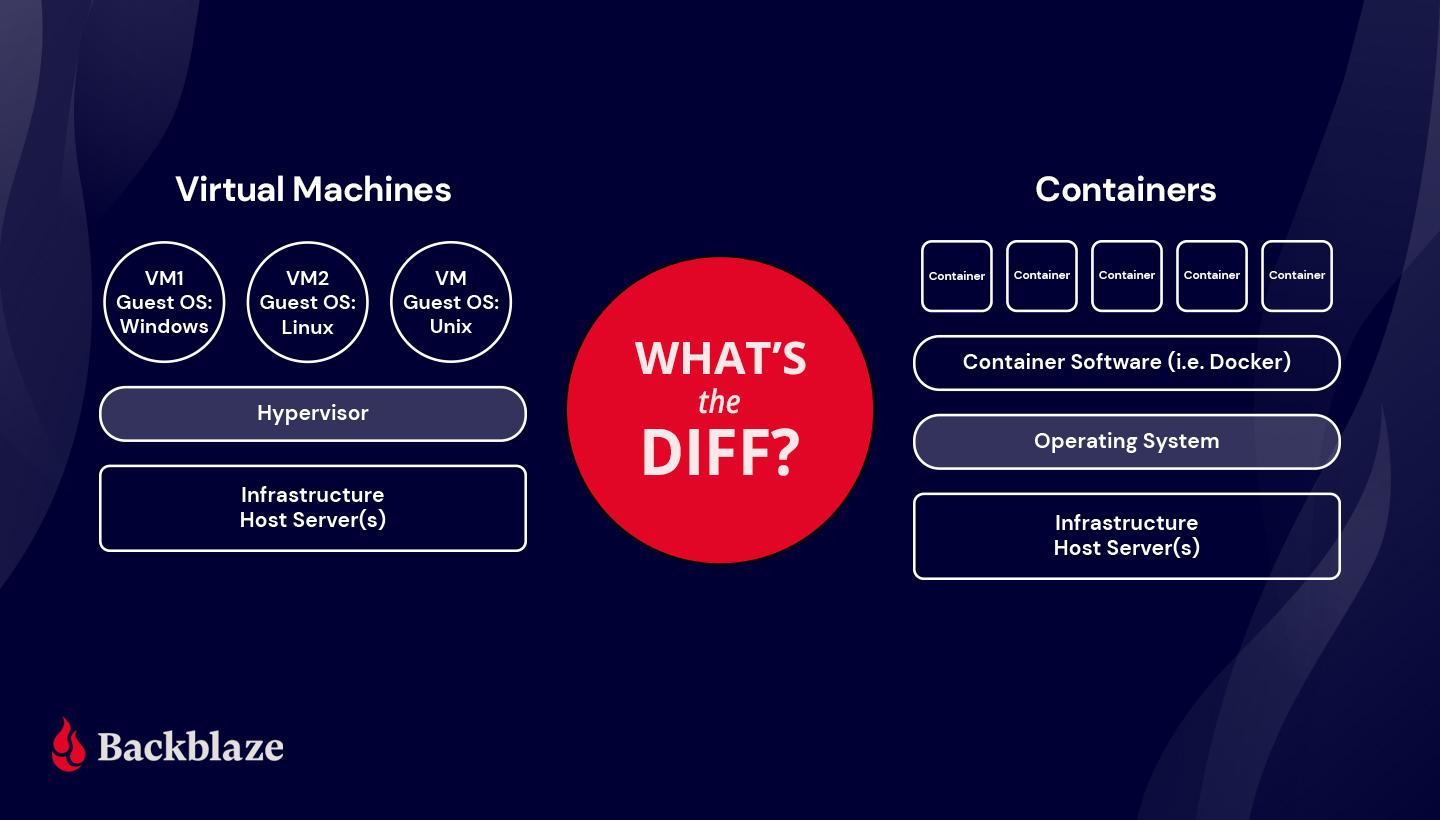Docker vs. VM
 Overview
Overview
In this article, we'll break down the differences between Docker and Virtual Machines (VMs), providing insights to help you decide which technology might be the better fit for your needs. Both Docker and VMs are essential tools for running applications, but they serve different purposes. Before diving into the comparison, let’s start with a brief explanation of each.
What is Docker?
In today's rapidly evolving tech world, organizations aim to digitize their businesses, but often face challenges with managing diverse applications across cloud and on-premises infrastructure. Docker addresses this challenge by providing a container platform that can host traditional applications and modern microservices, running on both Linux and Windows.
Docker is a tool and a form of virtualization technology that simplifies the development, deployment, and management of applications. It achieves this by using containers, which are lightweight, self-contained packages that bundle everything needed to run an application, such as libraries, dependencies, and configuration files.
With Docker, applications run consistently across different systems because the container includes all the necessary elements. Containers are lightweight since they don’t need a separate operating system like virtual machines do. Instead, Docker containers share the host system’s OS kernel, making them faster and more efficient.
Key benefits of containers include:
- Reduced IT management overhead
- Smaller snapshots of applications
- Faster startup times
- Easier security updates
- Simplified code migration and deployment
What is a Virtual Machine (VM)?
A Virtual Machine (VM), on the other hand, is a technology that allows a single physical machine to run multiple independent operating systems, each with its own resources. VMs are typically used when performing tasks that might be risky for the host system, such as running potentially harmful software or testing new operating systems. VMs offer strong isolation, so any issues inside a VM won't affect the host system.
Each VM is a complete system with its own operating system, virtual hardware, and resources like CPU, memory, and storage. A physical host can run multiple VMs, allowing for different environments to run simultaneously. VMs are commonly used in server virtualization, where a physical server is divided into several VMs to optimize hardware utilization.
There are two types of VMs:
- System Virtual Machines: Allow multiple VMs to run their own operating systems and share the physical resources of the host. These are typically managed by a hypervisor.
- Process Virtual Machines: Provide a platform-independent environment for running applications, hiding the underlying hardware details from the application.
While VMs provide strong isolation, they can consume a lot of resources since each VM includes its own operating system. This leads to longer boot times and higher resource usage compared to containers.
Docker vs Virtual Machines: Key Differences
Now that you know what Docker and VMs are, let's explore the key differences:
1. Architecture
-
Virtual Machines (VMs): VMs require both a host operating system and a guest operating system for each virtual machine. This guest OS could be any OS (e.g., Linux or Windows), regardless of what the host OS is. Each VM includes a complete instance of the operating system, which makes it resource-intensive.
-
Docker: Docker containers, on the other hand, run on a single host OS and share that OS’s kernel. Because of this, containers are much more lightweight, starting faster and using fewer system resources. Docker is ideal for running multiple applications on a single OS kernel.
2. Security
-
Virtual Machines (VMs): VMs are more secure by design because they run fully isolated from one another. Each VM has its own OS, kernel, and security features. For applications that require heightened security and isolation, VMs are generally the better choice.
-
Docker: While Docker containers also offer isolation, they share the host’s kernel, which can pose security risks. Running a compromised container with root access could potentially lead to an attack on the host system. It’s important to apply additional security measures when using Docker containers in sensitive environments.
3. Portability
-
Virtual Machines (VMs): VMs are somewhat portable, but moving them between different environments (especially with different hardware) can introduce compatibility issues. VMs are ideal for static applications that don’t need to be moved often.
-
Docker: Docker containers are extremely portable and can run consistently on any system with Docker installed. Since they don’t require a guest OS, they can be easily transferred between different platforms and environments (development, testing, production), ensuring seamless portability.
4. Performance
-
Virtual Machines (VMs): VMs require more system resources because each VM must load its own operating system. This leads to longer boot times and higher resource consumption for memory, CPU, and storage.
-
Docker: Docker containers are lightweight, allowing them to start and stop quickly with minimal overhead. Since containers share the host OS kernel, they use fewer resources, which leads to better performance and faster scaling.
5. Resource Efficiency
-
Virtual Machines (VMs): VMs need more system resources as they load an entire OS for each instance. Running multiple VMs can quickly consume a large portion of the host’s CPU, memory, and storage, making them less efficient when compared to Docker containers.
-
Docker: Docker containers don’t need a full OS, which makes them highly efficient in terms of memory and CPU usage. Since containers share resources based on demand, they are well-suited for applications that need to scale quickly
Docker vs Virtual Machine Comparison Table
| Feature | Docker | Virtual Machines (VMs) |
|---|---|---|
| Boot Time | Starts in seconds | Takes minutes to boot |
| Architecture | Shares host OS kernel | Each VM has its own guest OS |
| Memory Efficiency | Lightweight, no need to virtualize | Requires full OS for each VM |
| Isolation | Limited isolation, shares host OS | Full OS isolation |
| Deployment | Quick and easy deployment | Slower and more resource-intensive |
| Usage | Best for containerized apps | Better for full OS and high security |
Should You Choose Docker or Virtual Machines?
Choosing between Docker and VMs depends on your use case:
-
When to use Docker: If you need to quickly develop, test, and deploy applications, Docker is a great choice. Containers are portable, lightweight, and work well with modern development workflows like microservices and CI/CD pipelines. Docker is also ideal for running applications across different environments without worrying about compatibility issues.
-
When to use Virtual Machines (VMs): For applications that require full OS isolation, increased security, or the ability to run multiple operating systems on the same host, VMs are the better option. VMs are commonly used in production environments, especially when security is a primary concern, or when running legacy applications that require a specific operating system.
Conclusion: Complementary Tools
Docker and virtual machines are not competing technologies, but rather complementary tools that serve different purposes. VMs provide strong isolation and are ideal for running applications that need their own OS, while Docker containers are lightweight, flexible, and designed for quickly deploying modern applications. Many organizations use both Docker and VMs in a hybrid approach, depending on the specific needs of their applications and infrastructure.
Both technologies have their strengths, and understanding the differences will help you make the right choice for your project.




No Comments